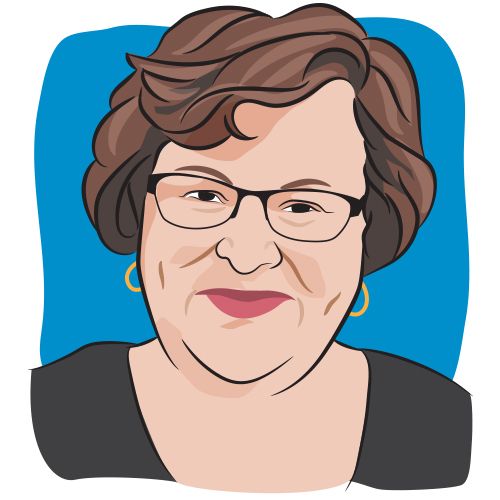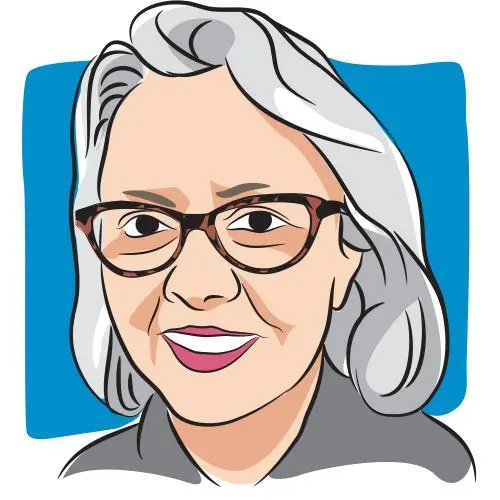Article
Artists and Patients Share Their Twist on Cancer
Author(s):
Twist Out Cancer has paired those touched by cancer with an artist, who creates a unique piece of artwork that reflects on their individual journey with cancer.
Art lovers and patients alike can now turn to Twist Out Cancer to share their “twist on cancer.”
The organization, which provides psychosocial support to individuals touched by cancer through creative arts programming, is pairing those touched by cancer with an artist, who creates a unique piece of artwork that reflects on their individual journey with cancer, through its Brushes with Cancer program.
CURE spoke with founder Jenna Benn Shersher, who was diagnosed with grey zone lymphoma - a rare form of cancer which affects less than 300 people in the United States - about her journey with cancer and what their organization has to offer patients and their loved ones.
Can you tell us a little bit about your journey with cancer?
I had almost a full year of sort of strange medical elements from viral meningitis to a pinched nerve to having the flu every couple of weeks and then eventually it was followed up with night sweats and just the need to sleep for hours at a time. And, so you know, after being hospitalized for viral meningitis, and continuing to go back to doctors pretty much every three to four weeks with new symptoms, my orthopedist who had previously diagnosed me with a pinched nerve ended up offering to do a scan and the scan is what ended up showing a mass in my immediate Steinem, which led to further scans and further blood work and a bone marrow biopsy. Eventually, it was concluded that I had what they thought was Hodgkin's lymphoma and a couple weeks after that, after some further digging, they realized that I had this rare blood cancer called gray zone lymphoma.
What is the main goal of Twist Out Cancer?
The main goal really, is to figure out meaningful ways to utilize the creative arts as a mechanism for healing. For me, it was dance and it was writing, and those are creative art forms that quite frankly, I hadn't been in years. I mean, I grew up dancing throughout, you know, from when I was 3 years old, all the way up through middle of college, and then kind of put that aside and stop doing that. And I kind of found that during this period of fighting for my life, that I didn't have that much to lose. So, I started posting these ridiculous dance videos and really reconnected with writing, which really became a coping mechanism for me. It was a place to process my feelings, my hopes, my dreams and my fears, and create community. I just found that the creative arts were so critical in raising awareness, building community, and in this process, what I was experiencing.
For us, specifically the Brushes With Cancer program, which is our main program, is really about figuring out unique ways to use the arts to help people come forward with their story and to be able to see their own experiences through someone else's eyes. Our main focus now is art therapy-focused programs, and Brushes With Cancer, which is like our Hallmark program that we've been doing for the last eight years and has impacted over 18,300 people in the process.
You have a signature program called Brushes with Cancer — what is this?
It's a program where we match people touched by cancer. So that's previvors, survivors — we identify anyone that's heard those three words, “You have cancer.” So, we call them inspirations up with artists, and they are expected to connect over a four-month period and those relationships are guided by mentors that are often clinical social workers, psychologists, board members, cancer survivors that have gone through the program, people that have been deeply impacted by our work, they help to oversee the relationships to make sure that those relationships are meeting expectations, that they're connecting in a meaningful way.
The artist is then charged with creating a unique work of art that's reflective of that individual’s journey with cancer. And once that artwork is created, we then launch these big art exhibitions and celebratory experiences for the participants, their family members, their loved ones, the people that are in their world. We're excited that we've also now included an online auction piece so that people that aren't able to come to these big events, we then are able to amplify the stories and to showcase the artwork that was created, and to allow people from anywhere really in the United States and Canada to be able to purchase art that is inspired by people that have gone through something really challenging. It's all about storytelling and empowering people with their story so that they feel comfortable moving forward and also educating the public in the process.
2 Commerce Drive
Cranbury, NJ 08512
All rights reserved.




